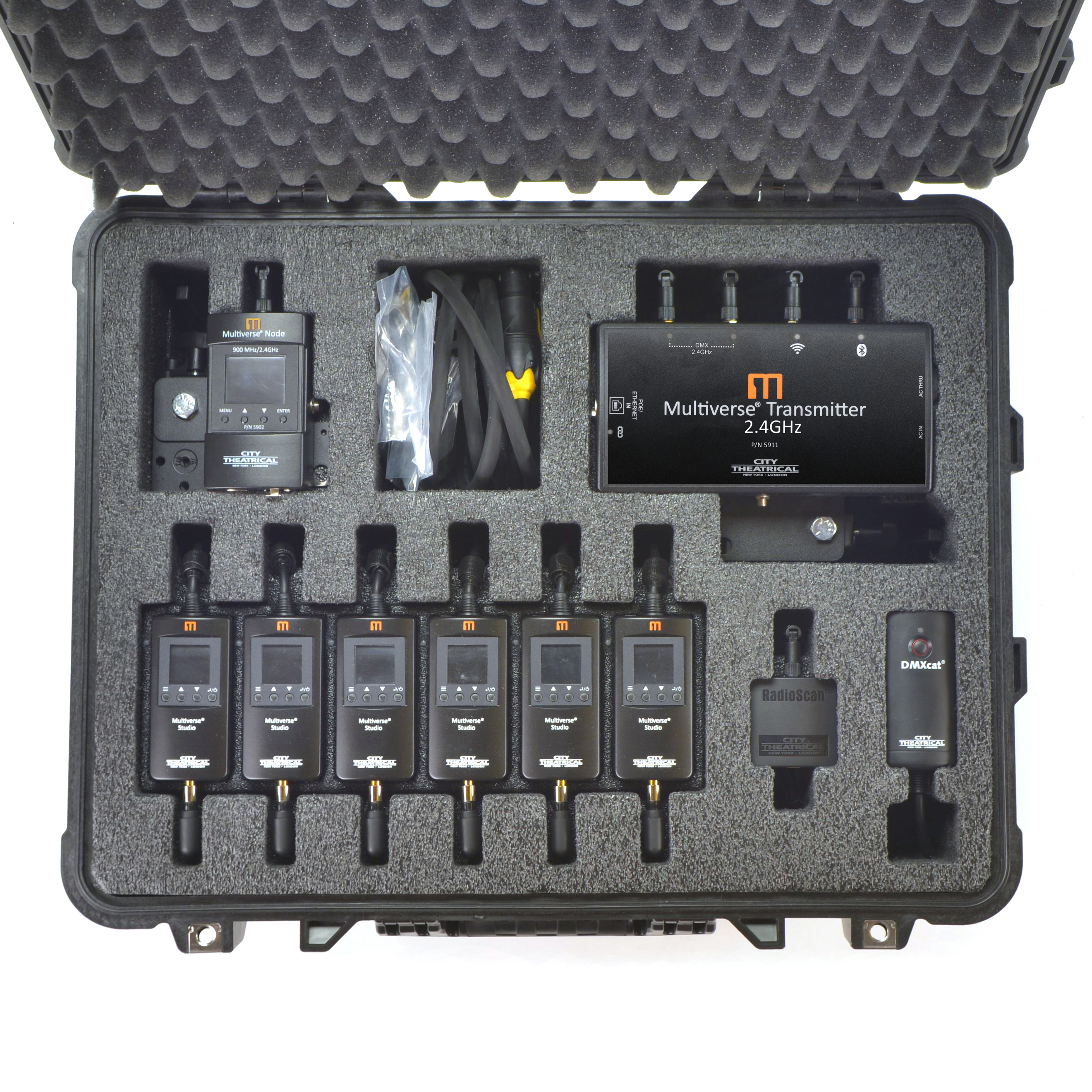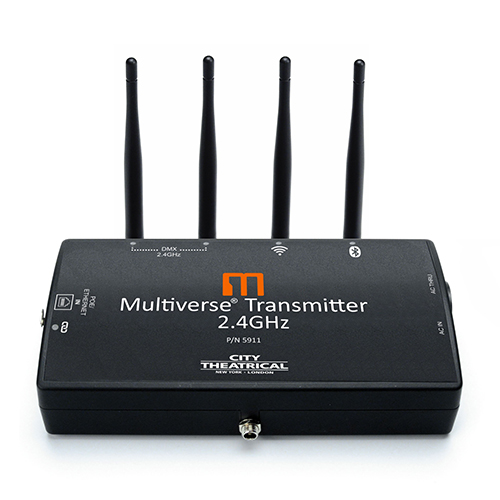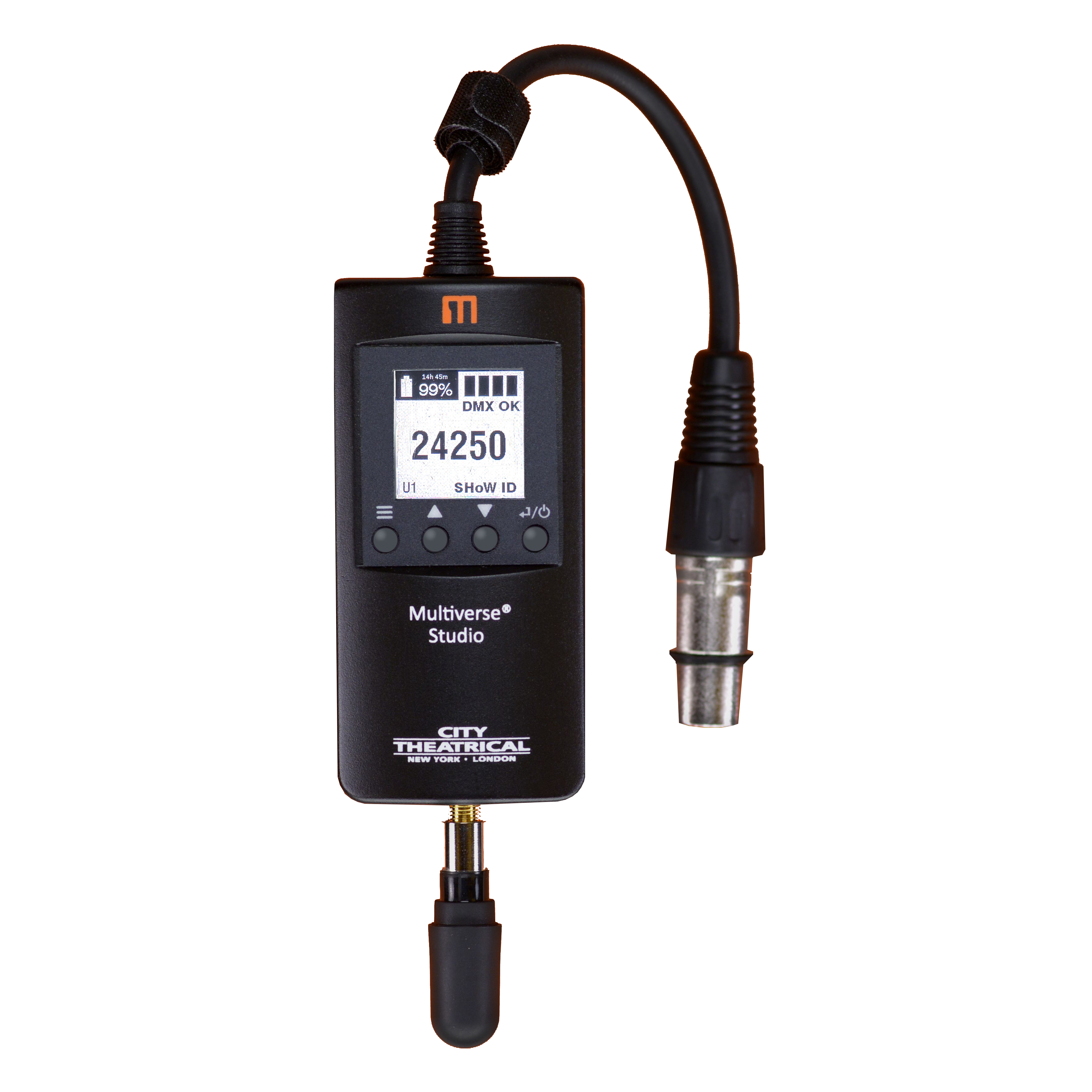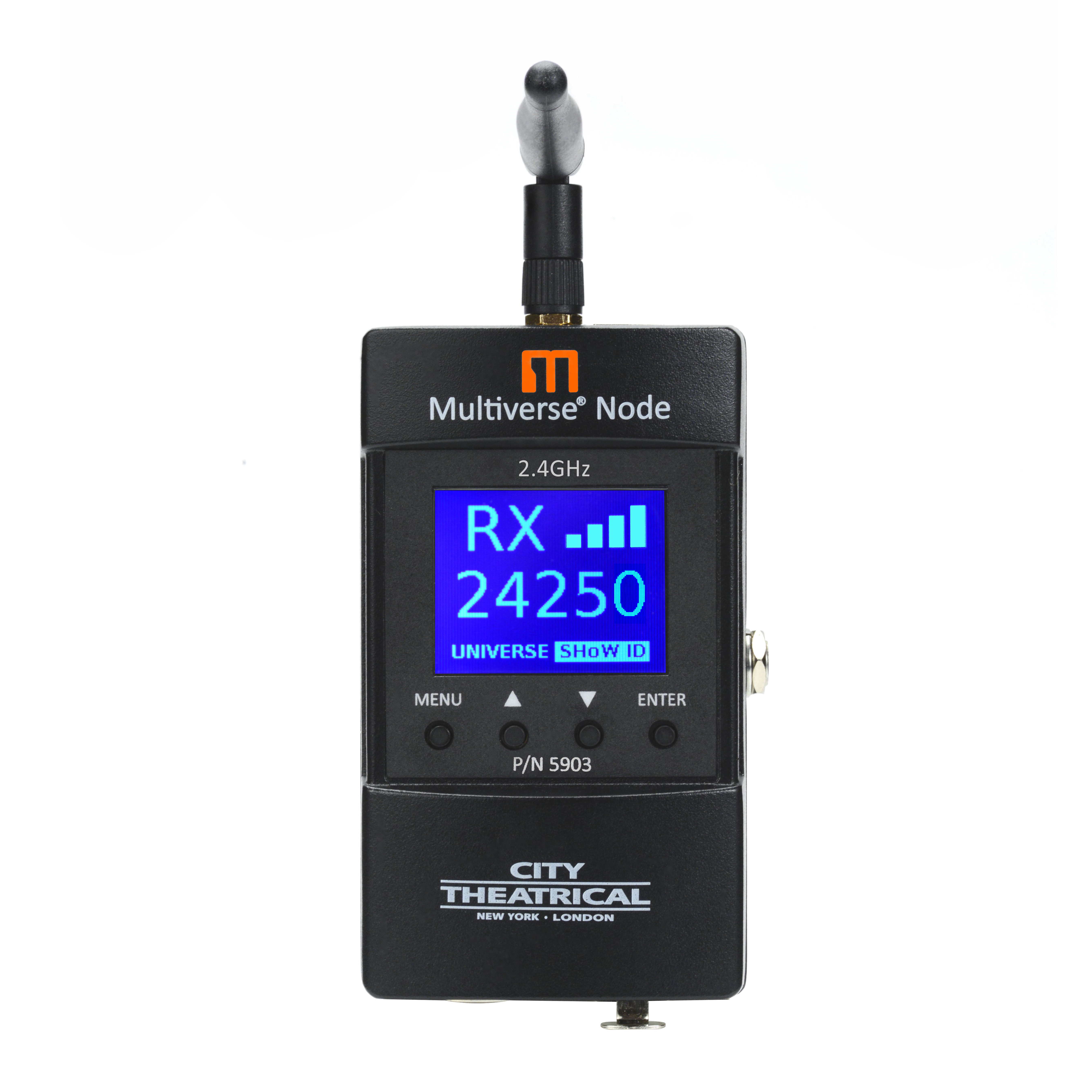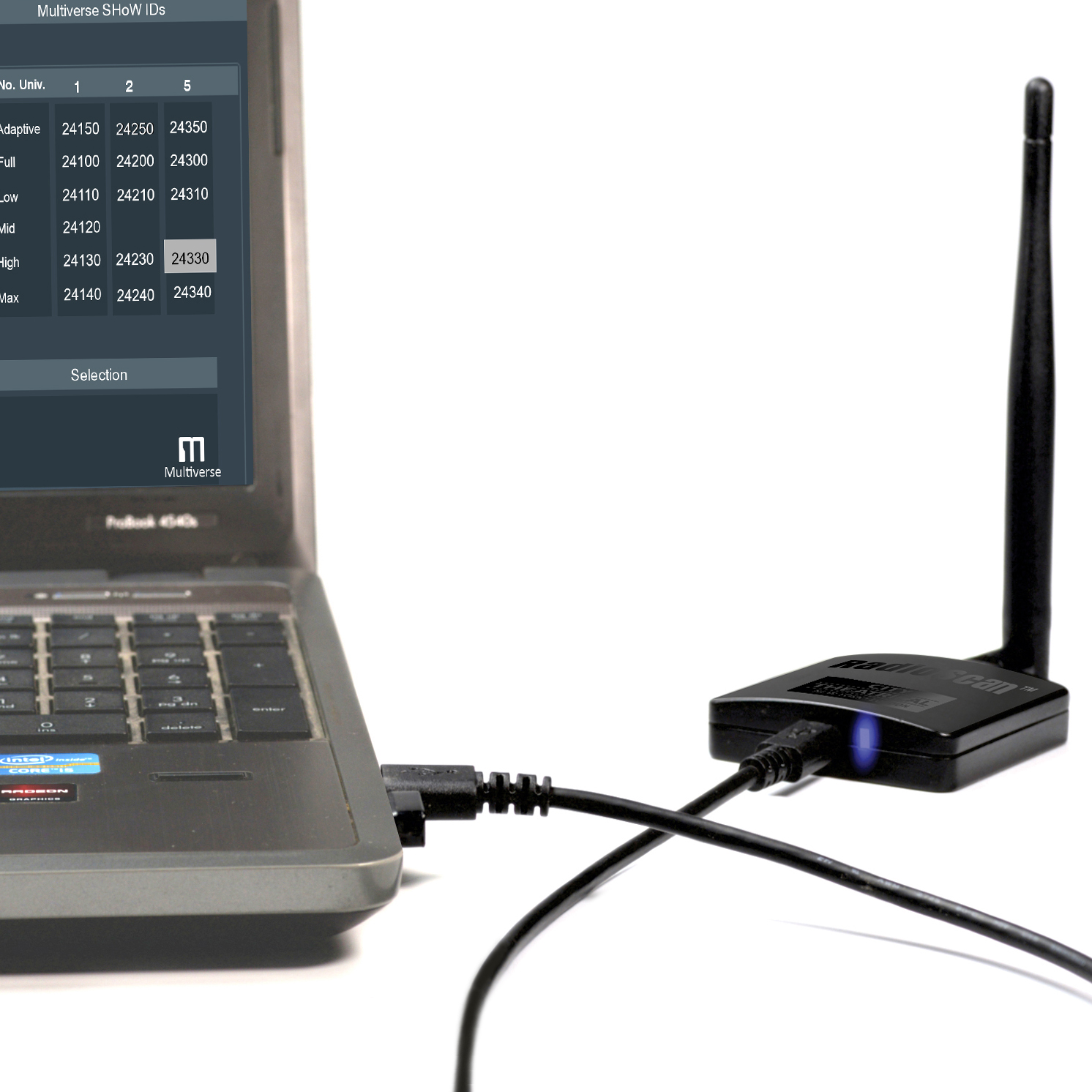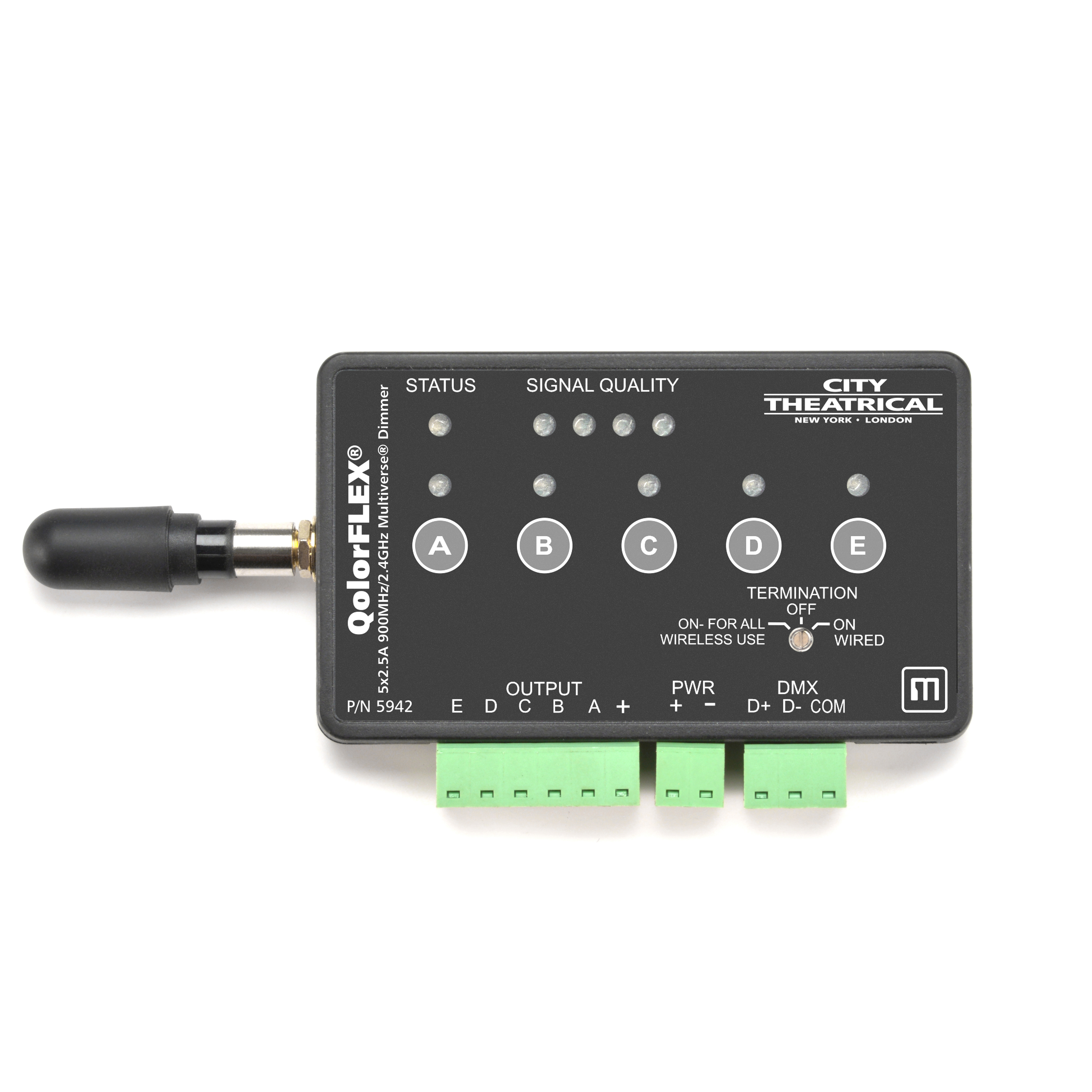The Sex Lives of College Girls
Learn how Multiverse Studio Kit and QolorFLEX Multiverse Wireless Dimming Control were used for Season 1 of The Sex Lives of College Girls on HBO Max in this City Theatrical case study.
City Theatrical's Multiverse® Wireless DMX/RDM for Season I of The Sex Lives of College Girls, the television show on HBO Max
Discover more about their experience with the Multiverse Studio Kit and other wireless DMX/RDM products, including QolorFLEX Multiverse Dimmers, by City Theatrical in this wireless DMX case study Q&A taken in October 2023 below.
CASE STUDY:
Multiverse® Wireless DMX/RDM for Season I of the television series The Sex Lives of College Girls on HBO Max
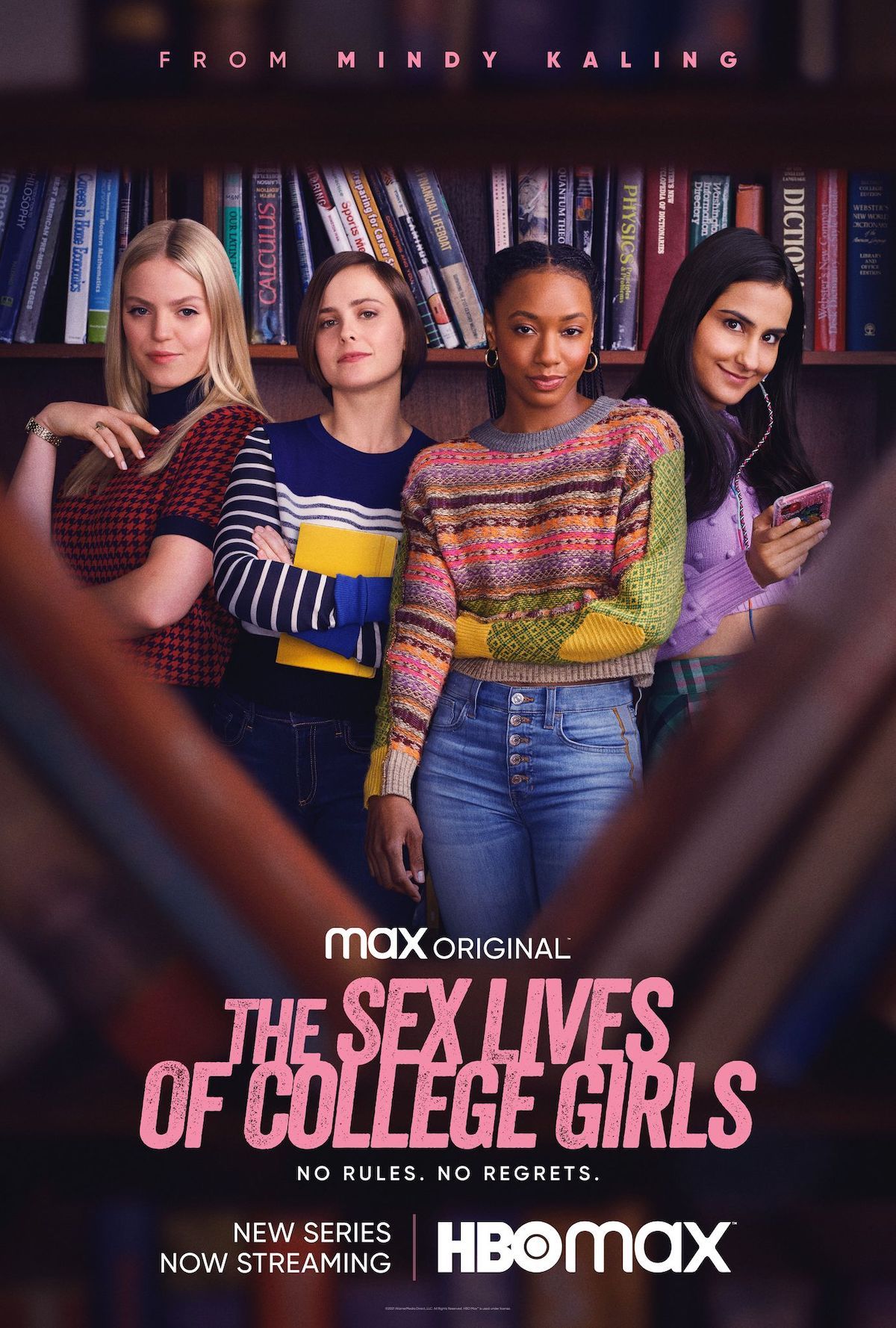
The Sex Lives of College Girls, Season 1 on HBO Max
Learn more about the showThe Sex Lives of College Girls is an American comedy-drama television series created by Mindy Kaling and Justin Noble. It is a show that follows the lives of four 18-year-old freshmen roommates at the fictional Essex College in Vermont, USA. It covers their sexually active lifestyle as they deal with the struggles and hardships of college and adulthood. The Sex Lives of College Girls premiered on HBO Max in November 2021.
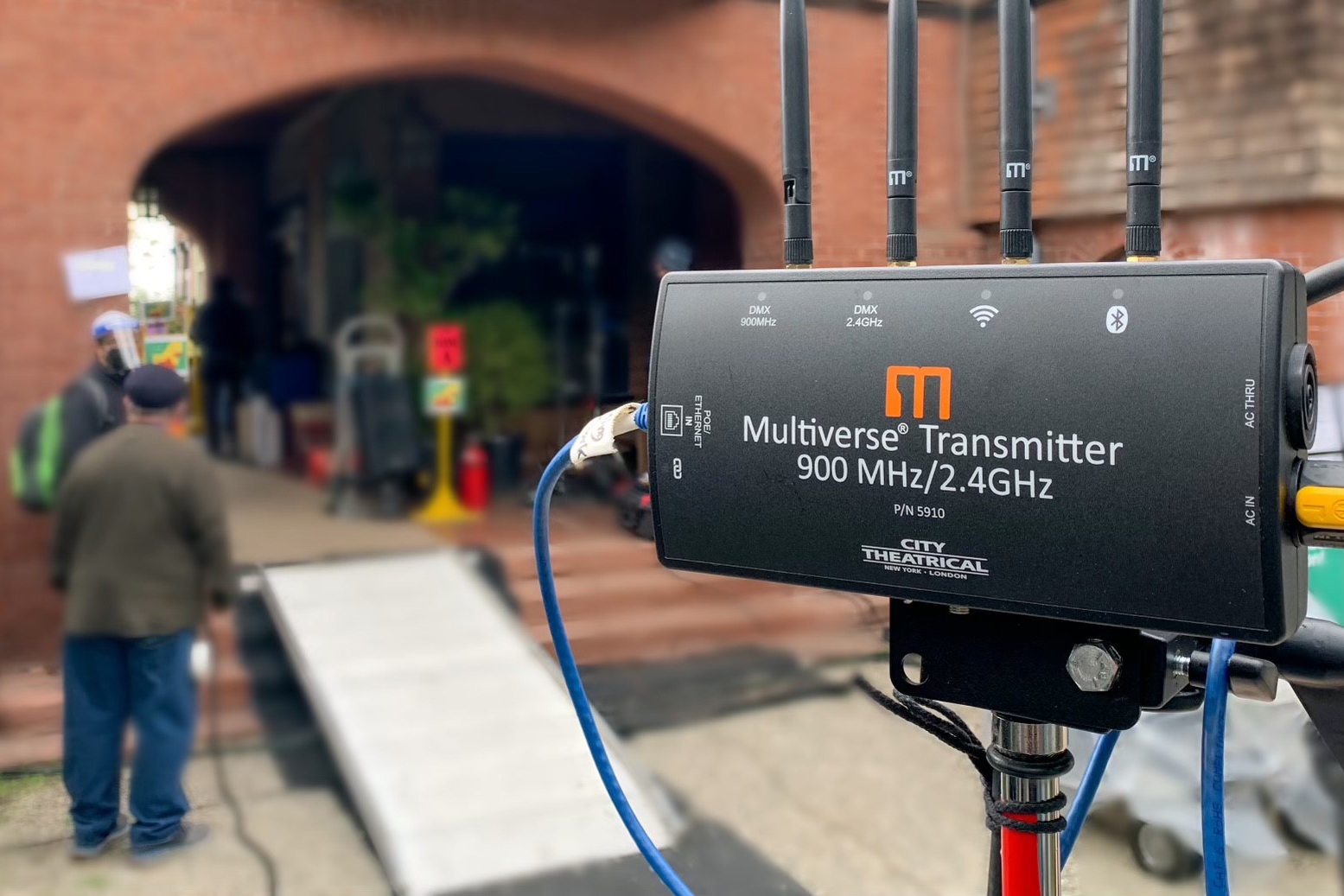
Multiverse Transmitter on set at The Sex Lives of College Girls Season 1
THE CASE STUDY Q&A:
City Theatrical, LLC (CTL): Hi Carlos! Let's talk about your show, The Sex Lives of College Girls, Season 1 - when did you start shooting the show?
Carlos M. Torres (CMT): Filming started late 2020/early 2021 and I joined the team in February 2021. We did 10 episodes, which took about six months.
CTL: What was it like working on The Sex Lives of College Girls?
CMT: Being a new show, the Director of Photography, Rick Page, did the pilot and set the look for the show. From there, we knew what it was going to look like. Every episode has similar look. It took us a little while to get to that same look from the very first episode of season one, and then we finally landed on it, and it stayed throughout the season.
Season one of the show looks very different to Season two, because there was a different Director of Photography. The easiest way to spot the difference is scenes filmed with the girls are in the common room. There's not as much contrast in Season two.
CTL: How is it working with Rick Page? Did you share the same vision for the show lighting?
CMT: It was great! Yes, we shared the same vision. You'll see similar quality lighting in another show we worked on together for NBC called Grand Crew. Back a few years ago, we shot a single camera 1/2 comedy. We never just used one camera, we used three cameras and shot three different angles at the same time. It was very difficult shooting that comedy to make it look cinematic, because we didn't have the LED lights or Multiverse wireless DMX lighting control that we use now. I can now place a battery powered or a very simple LED light in a place where I would have had to put a bulky Tungsten unit before, and I couldn't put it there because the cameras would have seen it. Now, for shows like The Sex Lives of College Girls, I can hide these units in places where I could never put them before, and I make it look more like a movie. It looks more like a romcom movie than a flatly lit, single camera comedy. That's what Multiverse really helped me to do. All the sets on The Sex Lives of College Girls Season 1 were big. The dining hall was like Hogwarts - it was huge. It took up space in the biggest stage in Warner Brothers, Stage 16.

Carlos M. Torres
“Multiverse products are the simplest plug and play transmitters and receivers that you could own. All you have to do is plug it in and then you can see the digital display and simply and easily program it to what it's supposed to be instead of seeing flashing lights or trying to pair it. You just plug it in and then it works.”
- Carlos M. Torres, Chief Lighting Technician, The Sex Lives of College Girls
CTL: That sounds interesting - what was it like lighting the dining hall space?
CMT: The dining hall was built on stage, but you wouldn’t realize it when you watch the show. It was very challenging. I had set the lights way off to the sides, so they could be hidden, so I controlled them wirelessly using my Multiverse Studio Kit components. It has become the way to do it, and everybody copies that formula for these kinds of comedies. You'll see the same thing on other TV shows now. It took me about 10 years to refine the whole process and it keeps getting better now. I'm on top of it so much that I can pick and choose the lights and wireless devices that I use to make it simpler, easier, and faster.
CTL: What kind of light fixtures are you using for a space like that? How do you communicate with them?
CMT: I have lights that are like light mats. I use Kino Flo units that are a little more dynamic because I can make them any color I want. It’s the same with Gemini Litepanels, and Astera Titan tubes. All of these have a Multiverse Studio Receiver plugged into it.
CTL: How many universes are you using at the same?
CMT: On that particular stage, like Stage 16, we are using 7 to 10 universes simultaneously.
CTL: Are you using the 900MHz or 2.4GHz band for your wireless DMX broadcasts?
CMT: On the equipment I use, I like to use the 900MHz band mostly so I can ensure that nothing is going to break the connection. I do use the 2.4GHz when we have multiple universes and I know where and when is best to use that having had used it for so many years. All my equipment is on carts in an area where we are working near the set. That's where my Multiverse units are located which are set to 900MHz. The rig itself gets the 2.4GHz band, which it will usually be lighting a backing or trying to use them to operate the dimmers.
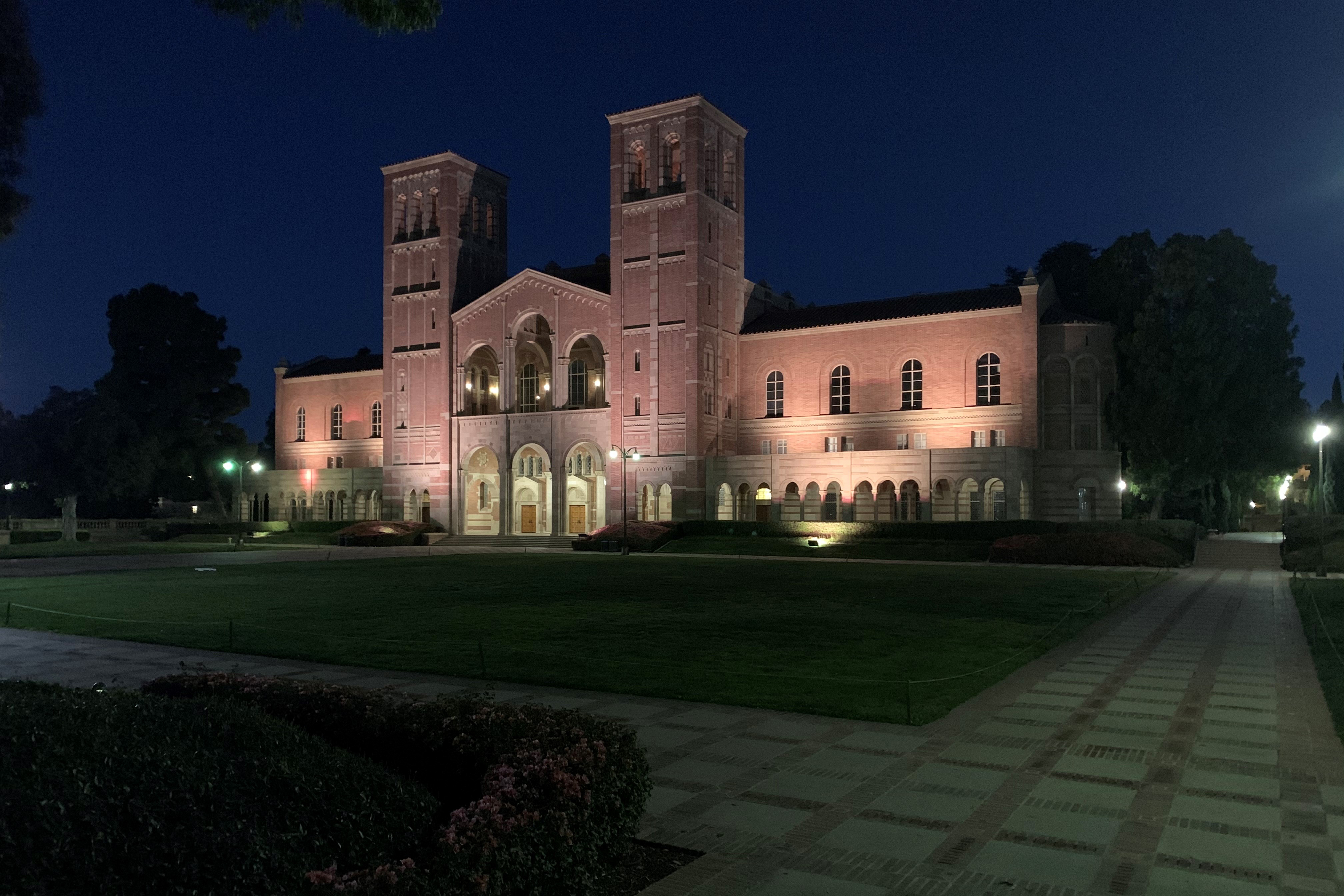
University setting for the fictional Essex University, on location at UCLA, for shooting The Sex Lives of College Girls Season 1
CTL: How are you using QolorFLEX 5x2.5A Multiverse Dimmers?
CMT: I use QolorFLEX 5x2.5A Multiverse Dimmers for wireless DMX dimming control on light mats to make them easier and faster to operate. I use Velcro to attach a power supply and the dimmer on the back of the unit itself. All I need to do is plug in the power supply, using an extension cord to it, and the light mats are usually ready with three channels. It's so fast, and that's just how you have to be. You have to be so fast because, in a comedy, what you want them to do, is have the time to be funny. Nothing else matters. That's why for years these things always looked flat. Before, no one would give it the time needed to make it look good.
For Arrested Development Season five, I worked with Director of Photography, Patrick Stewart. That was the beginning of all this for me. I had LED tubes at that time, Quasar tubes, and nothing was being controlled wirelessly at that time. When I did that show, I had a programmer and I controlled all the lights, and they were all hardwired. If you see that season and take a look at it, it's a big jump from the previous season, and the way it looked still doesn't compare to The Sex Lives of College Girls or Everything's Gonna Be Okay, or anything else that I've worked on recently using wireless DMX.
CTL: Was there any difference in your technique from Arrested Development Season Five to The Sex Lives of College Girls that might have attributed to the lighting differences?
CMT: The lighting was similar; it was just bigger for The Sex Lives of College Girls. The sets and the whole scope were so much larger. We also used UCLA as a backdrop at times. The girls in the show are supposed to be going to Ivy League school in New York State, and some locations at UCLA worked.
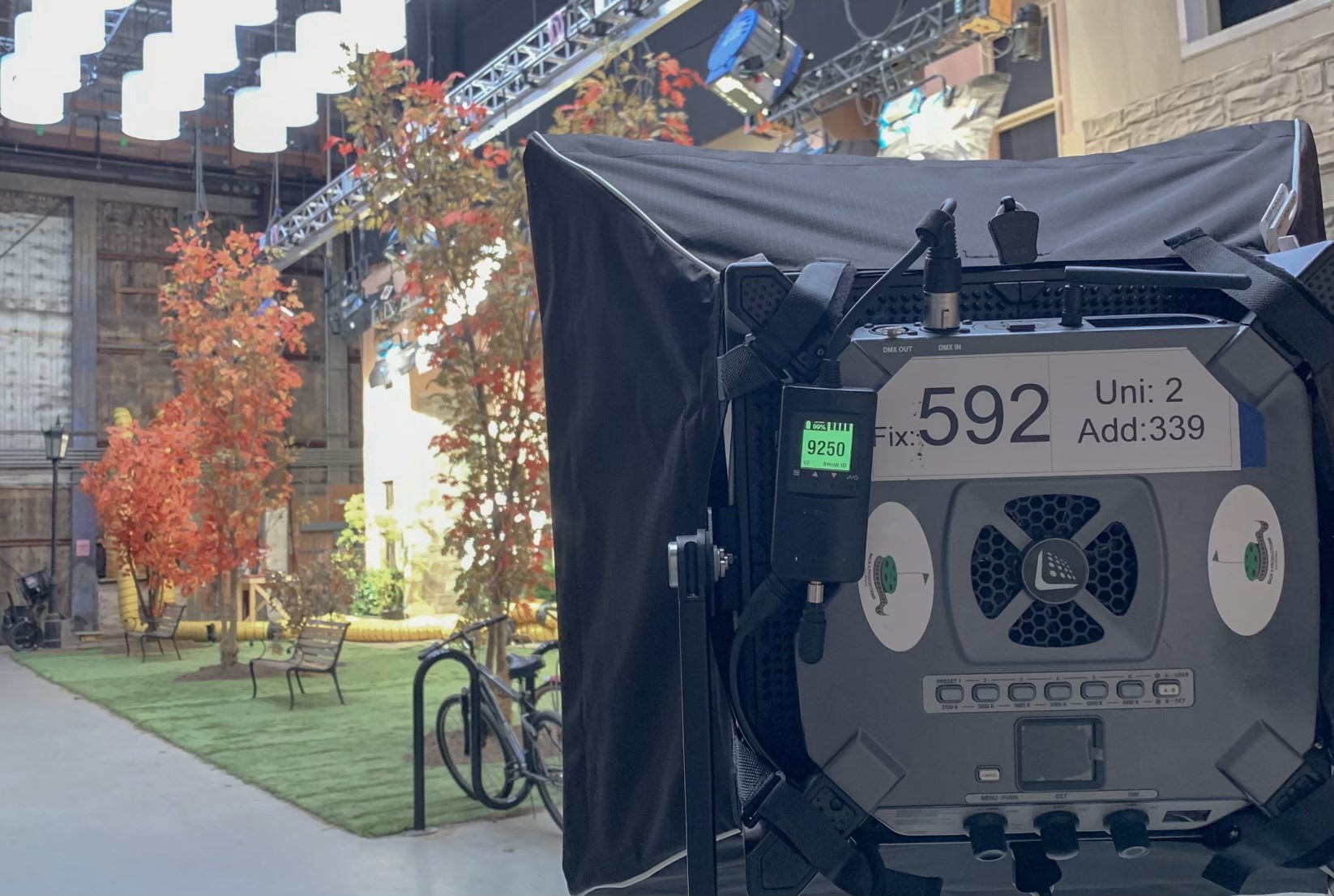
Multiverse Studio Receiver on set at The Sex Lives of College Girls
“Multiverse Studio Receivers are reliable and always hold the connection. I have never had an issue with Multiverse products, so that's why I keep Multiverse and continue to use it. I love it.”- Carlos M. Torres, Chief Lighting Technician, The Sex Lives of College Girls | |
CTL: Looking back, how would you describe the technique that you've grown to use for comedy shows? What were some of the key learnings that can be applied to similar shows?
CMT: In the majority of these shows, when you work on them, the cinematographer will have what's called a "look book". They include lighting references and usually also come in a digital form. I get to take a look at these books and they show us where the lights would probably be going. The intensity and the color is usually different. You do things to create a different look for that particular show and that cinematographer. Throughout the evolution of this, that look book has become more and more key to take a look at where in the past it wasn't that big of a deal. In movies, they've done it since the beginning of time, especially for feature films, but comedies, it is not so. What I've had to do is create a way to get those looks efficiently. Through the years, it has been continuously modified. I'm always changing it.
When I first had the opportunity to use Multiverse wireless DMX, Gary Fails came to a show I was working on, and I was totally against change. I thought it was complicating everything and wasn’t sure why we were doing it. We already had wireless DMX tools available to us, so why Multiverse? Why do we need this complication? Then I started to look into it, and Gary brought the RadioScan Spectrum Analyzer into the conversation. I started looking at it and I was amazed. There was a signal to show the open area where we could program these units to, and they would stay right in that area and always be connected.
At first, the Multiverse transceivers didn't have a battery in them, and we had to change them and plug them in while using them. Once the Multiverse Studio Receiver was introduced for film & video with batteries, we were able to make things much more efficient. Then with the Multiverse Studio Kit, we had all these things in one tub! We would just put the kit on the project, and it worked great.
CTL: How long have you been using Multiverse Studio Receivers and Kit?
CMT: It has been about three years now. At first, we were trying to adapt the Multiverse Node to our needs. The Multiverse Studio Receivers currently offered for film lighting with battery operation are amazing for the pace and demands of our projects.I’ve been using it since 2020, when we were using them on another comedy show, The Unicorn. We were about to start a pilot and then we got shut down due to COVID. It wasn’t until I came back in August 2020 that I could start using them again.
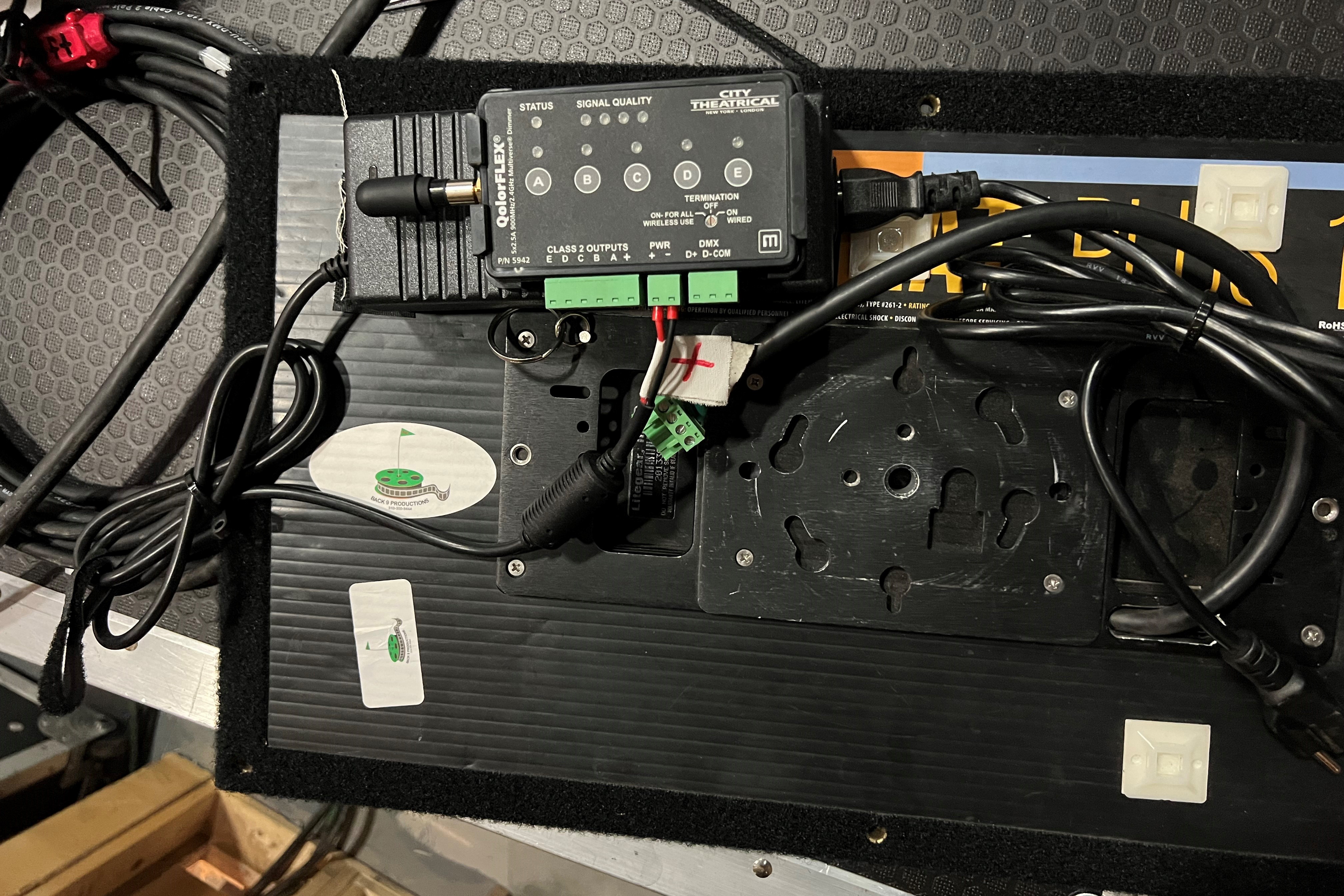
QolorFLEX 5x2.5A Multiverse Dimmers on set at The Sex Lives of College Girls Season 1
CTL: How do you use your Multiverse Studio Kit in combination with your other gear?
CMT: I use a hybrid system now, because I have to transmit CRMX using other transmitters. My Kino Flo units, which have an antenna, get better connectivity when I throw my Multiverse unit on there. I still have Multiverse Nodes for single universe broadcasts. I permanently Velcro them on the back of these units, and keep it plugged in. This works best because they tend to work better with the DMX hardwire in the back, which is exactly where I plug the Multiverse Node in or the Multiverse Studio Receiver. It just seems to communicate faster, better, and without any interruption.
CTL: Do you have any learnings from using Multiverse wireless DMX that you would want to share with other gaffers?
CMT: I always say, Multiverse is the simplest plug and play transmitter and receiver system that you could own. All you have to do is plug it in and then you can look at the digital display. Then simply and easily program it to what it's supposed to be, instead of seeing flashing lights or trying to pair it. You just plug it in and then it works. It doesn't matter where it is. My console operator puts it on a stand and raises it about 12 feet in the air as standard everywhere we go, and it never drops out.
I can say that with confidence to everybody I talk to that you have to try it to understand. Especially when you go 900MHz, it is always connected, with no drops. You know when it's low on battery easily by looking at the color coding. It is also very fast and easy to see what universe you are using.
If anybody wants to be able to control all their lighting units wirelessly, I say these Multiverse Studio Receivers are amazing, and are going to replace the competitor's transmitters/receivers that they have. Use Multiverse Studio Receivers and your system will always work perfectly.
The Multiverse Studio Receiver always holds the last connection. I have I never had an issue with these, so that's why I keep Multiverse and continue to use it. I love it.
For more information about Carlos M. Torres, explore our QolorPIX Podcast interview with him from earlier this year, or visit his IMDb page.

The cafeteria set for The Sex Lives of College Girls Season 1
CITY THEATRICAL PRODUCTS USED
